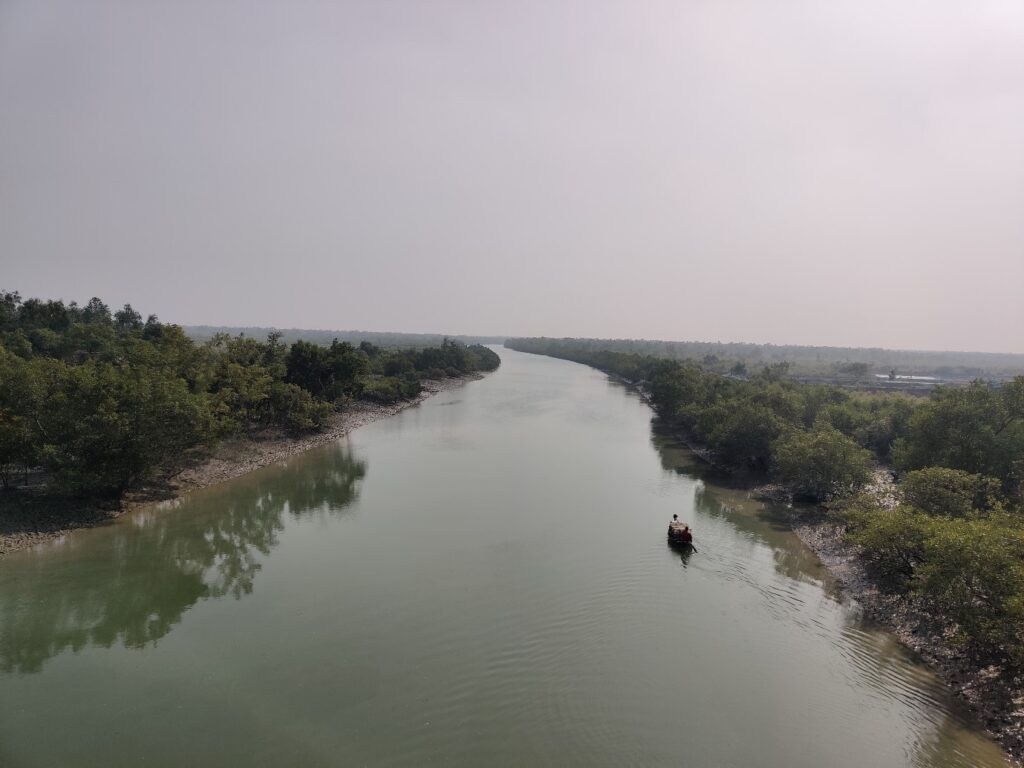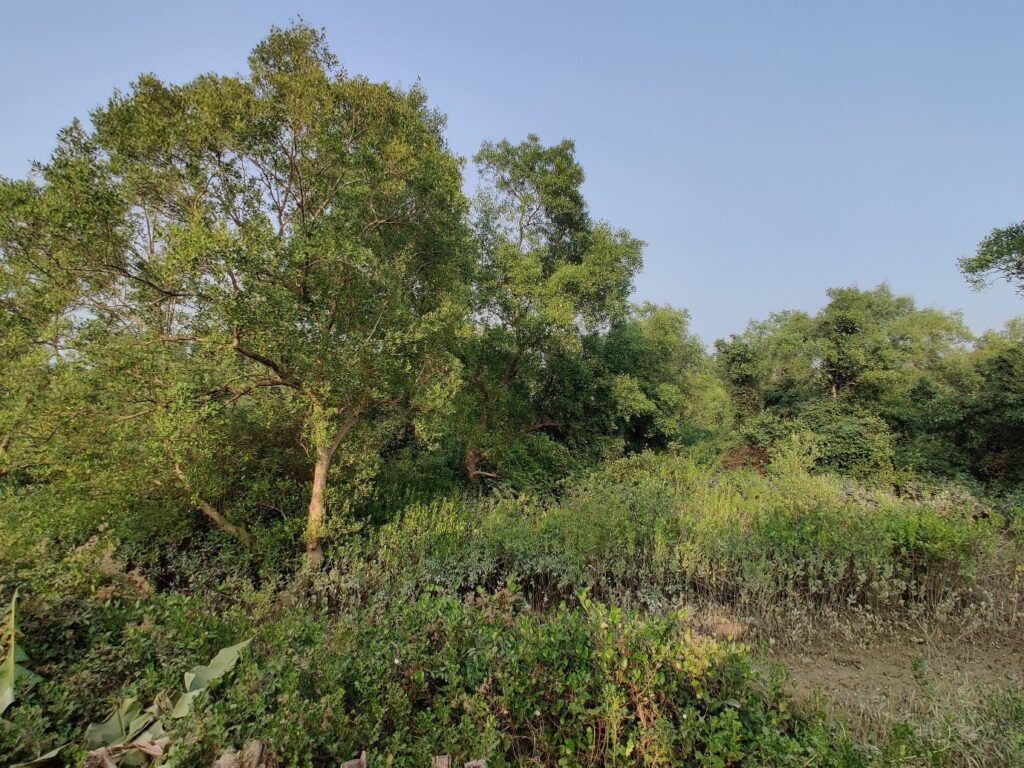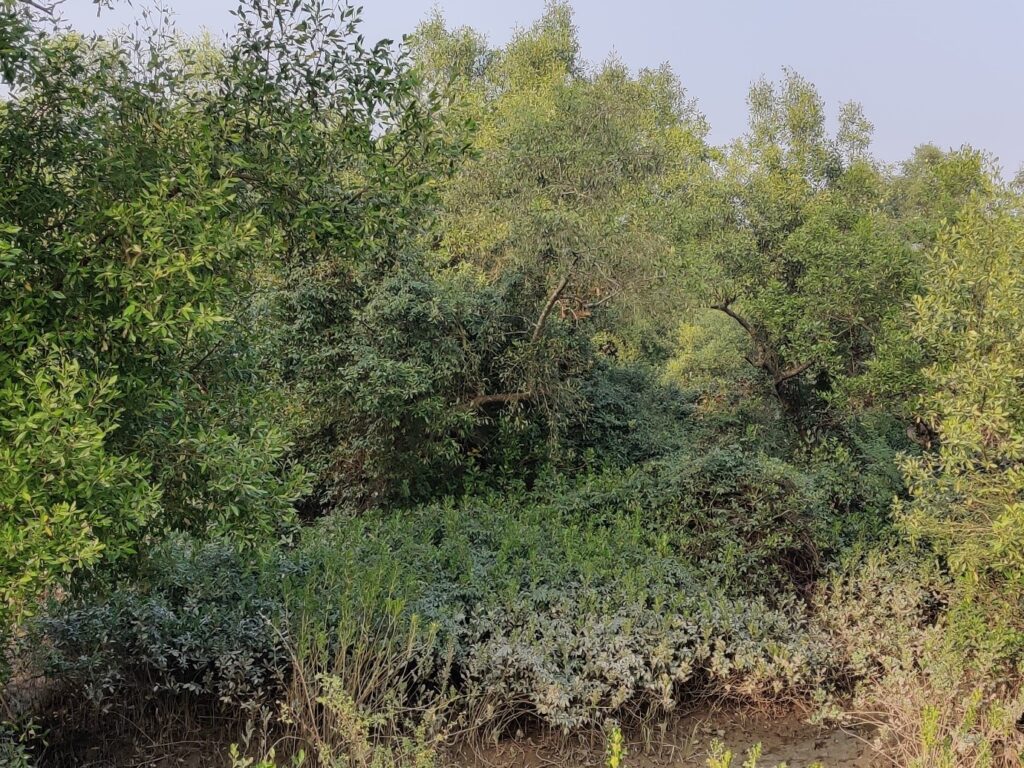Recently, the Indian government has announced a scheme for mangrove plantation along the coastlines (Mangrove Initiative for Shoreline Habitats & Tangible Incomes, MISHTI). Mangroves are an integral part of coastal biodiversity in tropical and sub-tropical climate and act as bio-shields against extreme climatic events. Mangrove ecosystem also helps to absorb significantly more carbon than regular forest covers. Yet, increasing pressure from human activities, especially agriculture, aquaculture and industrialisation along the coastal areas is threatening the very existence of mangroves. India has a coastline of about 7500 km and mangrove cover of 4992 sq km (Indian State of Forest report, 2021), The state of West Bengal has the highest mangrove cover at around 2114 sq km. Human activities have put mangroves under threat everywhere but it is time to realise the important role mangroves play in protecting the land from extreme climate events, especially cyclones in Bay of Bengal, the frequency of which has been rising at an alarming rate in recent years. In this article, Nilanjan Mishra, co-founder of a grassroot level environmental organisation in Sundarban, home to India’s most extensive mangrove eco-system, shares his personal experience.

Sundarban needs more understanding and respect than anything else. Indian Sundarban is home to around six million people. Anthropogenic pressure has already become a serious problem for preserving the delicate ecological and human harmony. Additionally, the majority of ecological ideas centre on people. And Sundarban is no different. The fact remains that the villagers profit from the artificial mangrove plantation and may use it as a source of income (this may, however, be seen actually as one of its advantages). Since thinking on ecology should not be burdened or biased with regard to human population and survival, this essay will attempt to address the topic from a different perspective that is in no way prejudiced towards people. Let’s divide the discussion into two main sections – first we will focus on the Sundarban delta, embankments, and riverine system and then we will discuss about island life.
Rivers, creeks, and canals completely encircle the active delta known as Sundarban. Rivers including the Ganges, Bramhaputra, Padma, and Meghna help to create this delta. Millions of tonnes of silt are transported by each of these rivers and deposited at the confluence. In essence, this siltation created these islands. Therefore, resisting a river by creating an embankment for the sake of our existence is essentially an attempt to fight the natural forces. Because of this anti-natural process, we keep losing ground. One very noteworthy example from Bangladesh deserves special attention here – under the project titled “Polder 32”, Bangladesh left an island empty after Cyclone Aila in 2009 and allowed the river to enter it. 46 cm of silt were dumped just a year later. We can infer how a river aids an island in gaining elevation from this instance.
In addition to silt, these rivers also carry fresh water, which is crucial for mangroves and the entire riverine ecology of the Sundarbans. Mangrove species come in 84 different varieties, some of which thrive in fresh water and others in salt. One of the more common explanations for the name Sundarban is that the primary mangrove species there is called Sundari (Heritera fomes). Because there isn’t enough freshwater flow, this species is rapidly diminishing. Since Sundari, Geoa, Keora, and Nipa palms (Golpata) can’t resist high salinity, they are being replaced by the salt-tolerant Bain (Avicennia), Kakra (Bruguiera gymnorhiza), and other species. Now is the moment to inquire as to the cause of this decline. Why is there a paucity of freshwater flow? What causes this? According to a study, a neo-tectonic shift occurred during the 16th century, tilting the delta toward Bangladesh and affecting freshwater flow in Hooghly. Because of this, the growth of Sundari trees in India is 20 times less than Bangladesh.
Another factor is that we only considered how much fresh water was required to sustain Haldia Port and not the entire Sundarban. Additionally, the Ganges has many encroachments upstream that are directly affecting this siltation process.
After a series of cyclones in recent years, there has been a call for planting mangroves in Sundarban. But this cannot simply be a mechanical process. How well do we understand and attempt to implement the mangroves’ natural regeneration process?
Do we have any plans to lessen the stress that humans place on mangroves? NGOs and the government choose a few species of mangroves, primarily Kakra, Bain, and Garan, and plant them in fields like we plant paddy. Is there currently a protocol in place for this plantation? Does it adhere to a natural pattern? Do NGO or government officials have access to enough data to assess the biological load and responsibilities before choosing a plantation site? In Sundarban, which primarily consists of mangroves and riverbanks, there are 350 species of fish, 2487 kinds of multicellular organisms, 140 species of protozoa, and 45 species of fish that dwell in mud. We observe significant human involvement in every artificial mangrove plantation project. For creatures that dwell in mud or deposit their eggs there, this is utterly hostile. One of the two living fossils that are still present in Sundarban is the horseshoe crab. It will cause a lot of disruption for them if we begin using any riverbank as our plantation plot and begin planting trees there. When mangroves naturally regenerate, the Dhanighas or Porteresia coarctata species emerges first, followed by the Horgoj/Kentki or Acanthus ilicifolius, and finally the Jaat Bain or Avecennia officinalis L. The eventual design is extremely complicated and dense, likely as a result of the need to protect the land from ongoing tide and ebb surges, floods, and storms. But artificial plantation of just a few select varieties cannot replace such a complex natural process.


It is obvious that if we do not address the freshwater issue, we will not be able to save the majority of our mangroves, and if that occurs, we will lose our natural biodiversity. The ‘nursery of fishes’ is a nickname for mangrove forests. Fish rely heavily on the protection and nourishment that mangroves offer. A dramatic decline in marine fish species is what we are currently observing. For many residents in Sundarban, fishing is one of the main sources of livelihoods and it has become more challenging recently. Some have even been forced to quit fishing altogether.
We can now view a wide variety of vegetation and fauna on an island. Wildlife isn’t just tigers and crocodiles. There are also birds and other animals. Nowadays, otters and foxes are less common. It is evident that some bird and pollinator populations are diminishing. Since Cyclone Amphan (2020), we hardly ever see honeybees or honeycomb. One of the most important functions in agriculture is pollination, which keeps crop and food diversity, fruit shape, fruit set, and production at a high level. Therefore, the agrarian ecology (and economy) is immediately impacted by the honeybee shortage, but there has been little significant field data collected yet, which is critical.

Sundarban is dependent on palm, date, and coconut trees for survival because of back-to-back mega cyclones. These trees must be planted and cared for because they are crucial for building resilience. To understand the value of both and protect them, a thorough “Plant-Pollinator Register” should exist. In the 1980s, chemical fertilisers and pesticides ravaged Sundarban. Since that time, the overall environment has been severely impacted. Following the Green Revolution, high yielding varieties of paddy entered the market. To achieve greater results from these seeds, increased use of chemical fertilisers and insecticides became the norm. In the long term, this process led to multiple issues including deteriorating soil health, rising salinity, and climate change. Now, farmers are becoming more and more aware of the value of traditional rice varieties. A few organisations are working to protect Sundarban’s traditional rice. Now more than ever, we must cultivate salt- and flood-tolerant varieties, and we must make an effort to gather seeds locally. Local seeds, fish, cattle, and pollinator conservation will increase our ability to combat climate change. Better security comes from greater biodiversity.
Absence of village planning is a major issue. Many people illegally encroach on the embankment by constructing homes or businesses. Also, people tend to expand their dwelling units without realising the kind of pressure such construction activities are imposing on fragile ecosystem of Sunderban. Agrarian economies require room to grow and breathe easily but without village planning, such space cannot be provided.
Although it is challenging to give a comprehensive prescription but to summarise the main themes: efforts must be made to:
1) Maintain freshwater flow of rivers
2) Use a scientific technique to rehabilitate the mangrove ecosystem rather than just planting new ones
3) Ensure village-level spatial planning
4) Protect all wild creatures and all types of seeds
5) Teach schoolchildren and locals about the unique Sundarban ecosystem
Reference:-
“Sundarban O Nadikatha”, Animesh Sinha (in Bengali)
” Sundarbaner Jol Kadar Praani”, Shantanu Mitra & Sayantani Sahoo (in Bengali)
Nilanjan Mishra is co-founder of Patharpratima Runners